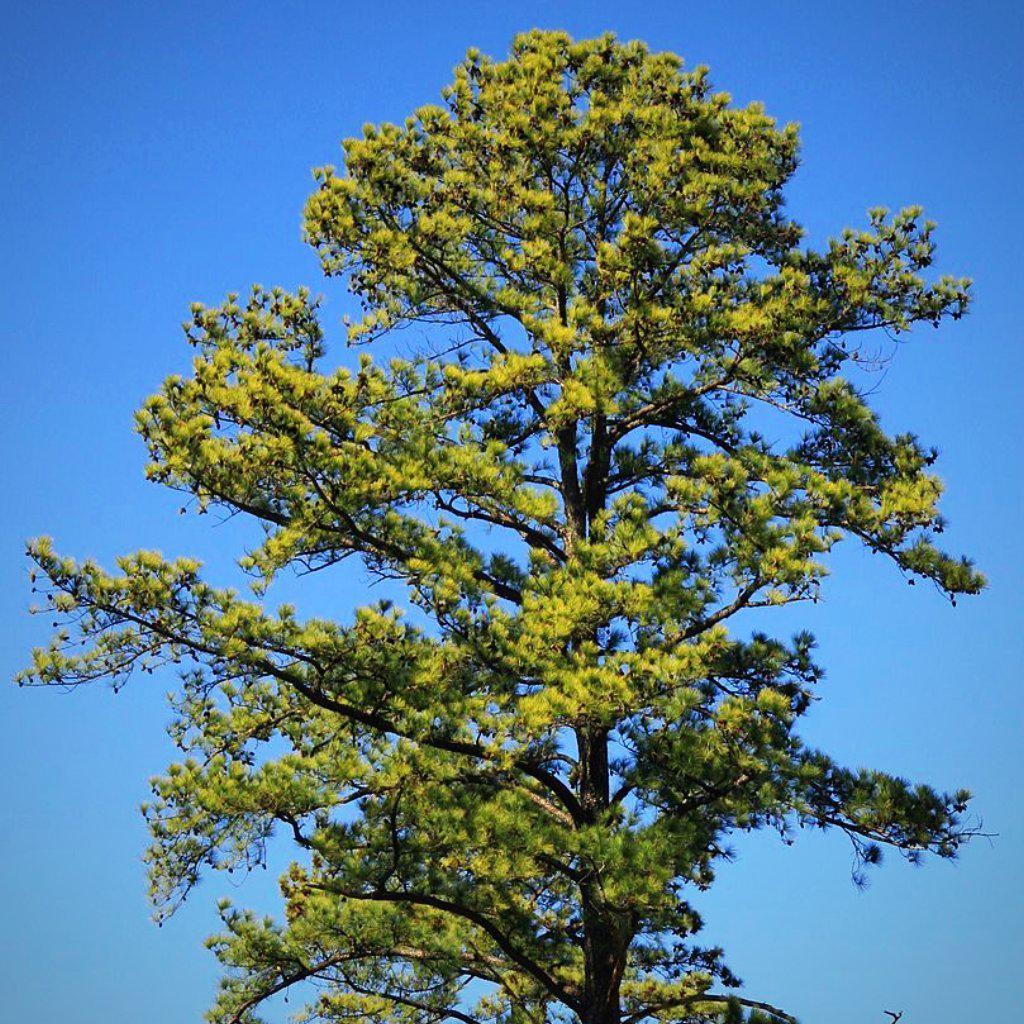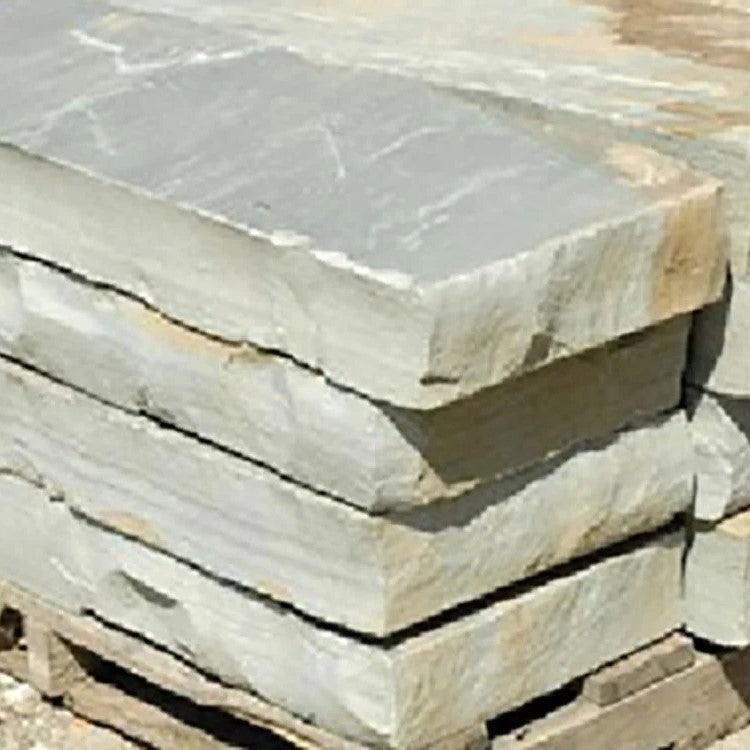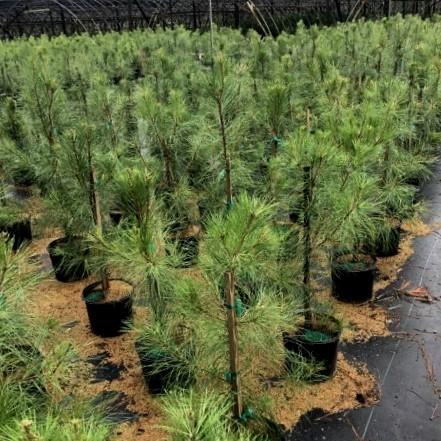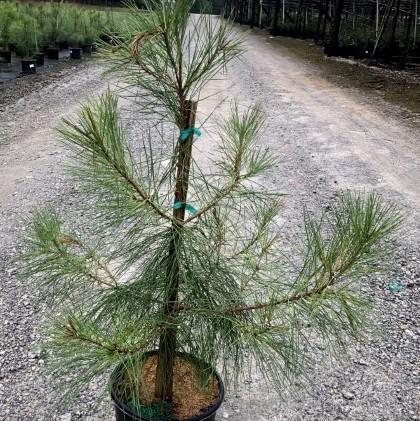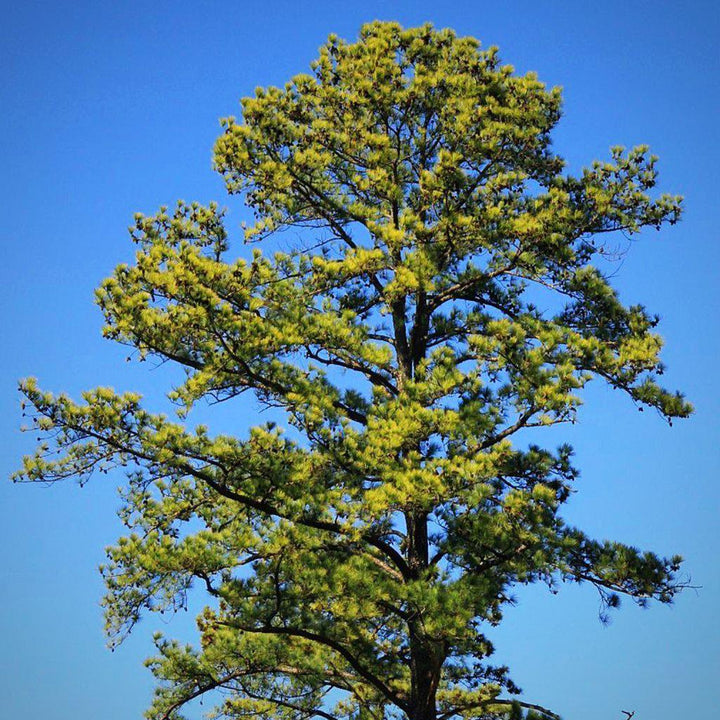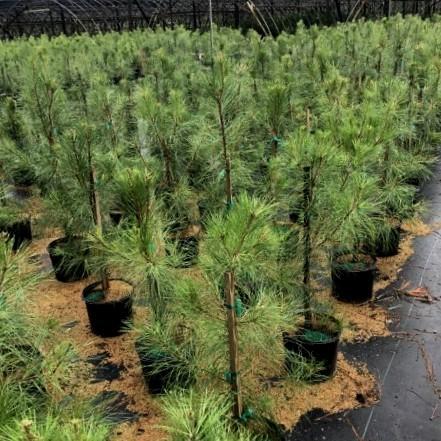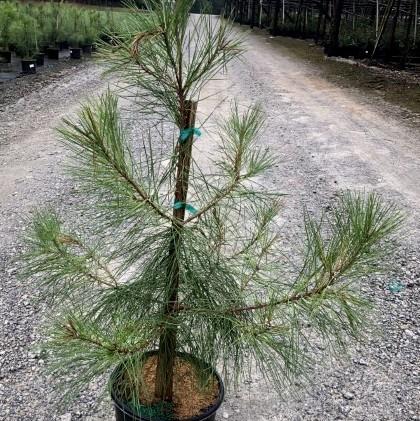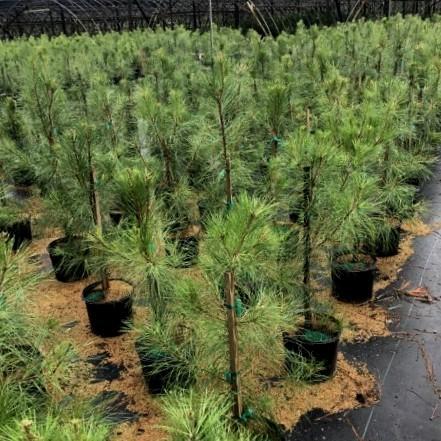The Loblolly Pine, scientifically known as Pinus taeda, is a large and fast-growing evergreen tree native to the southeastern United States. It is one of the most commercially important pine species in the region and is commonly found in forests, plantations, and landscapes.
The Loblolly Pine is known for its tall and straight trunk, reaching heights of 80 to 100 feet or more. It has a pyramidal shape when young, gradually developing a more rounded crown as it matures. The bark is thick, reddish-brown, and deeply furrowed.
The needles of the Loblolly Pine are long and slender, measuring about 6 to 9 inches in length. They are arranged in bundles of three and have a dark green color. The needles persist for about two to three years before shedding.
This pine tree produces small, oval-shaped cones that are about 2 to 4 inches long. The cones start out green and eventually turn brown as they mature. They release their seeds and disintegrate, allowing for natural regeneration.
Loblolly Pines are adaptable to a variety of soil types, including sandy, loamy, and clay soils. They prefer full sun and can tolerate a range of moisture conditions, from wet to moderately dry. However, they are most commonly found in areas with well-drained soils.
Due to its fast growth rate, the Loblolly Pine is often used in reforestation efforts, timber production, and windbreaks. It also provides habitat and food for various wildlife species, including birds and mammals.
If you're considering planting a Loblolly Pine in your landscape, make sure to provide enough space for its mature size. It can be a majestic addition to large properties, parks, or natural areas, offering shade, visual interest, and ecological benefits.
|
Type: |
|
|
Origins: |
Southeast N. America; GA Native |
|
Height: |
40' - 90' |
|
Spread: |
20' - 40' |
|
Spacing: |
30’ |
|
USDA Hardiness Zone: |
6 - 9 |
|
Culture: |
|
|
Bloom Color: |
N/A |
|
Season of Interest: |
MAINTENANCE NEEDS: Low maintenance plant. Susceptible to southern pine beetle and pine engraver beetle. Rust and rots may occur.
LANDSCAPE USES: Specimen or mass plantings, Naturalized Areas, Woodland Garden, Ponds and streams, Shade Tree, and Screening.
COMPANION PLANTS: Ginko, Japanese Maple, Magnolia
IMAGE: Dcrjsr, Pinus taeda loblolly pine large crown, CC BY 3.0

